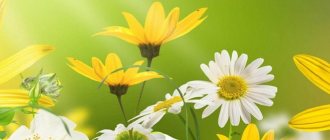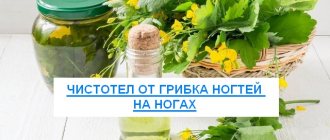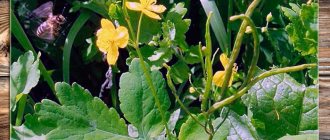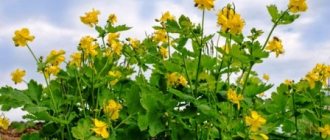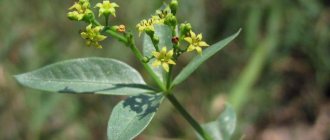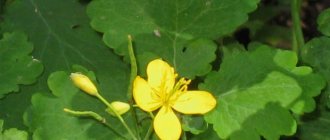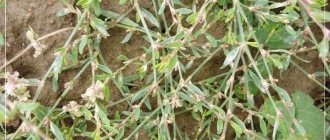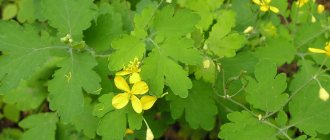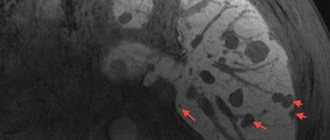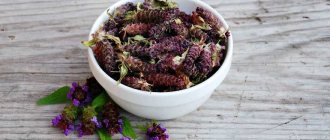What is celandine
Everyone knows what celandine looks like. This herbaceous plant, perennial, belongs to the poppy family. The natural habitat is the temperate climatic conditions of Eurasia. Also grows in Madeira, Canary Islands, Zealand or Morocco.
Grass grows along roadside ditches, on damp forest edges and outskirts, in parks and gardens. Loves soil rich in humus.
As early as 16, Europeans were growing celandine as an ornamental flower.
Among the people, celandine is known under different names such as devil's milk, yellow milkweed, warthog, swallow or cleansing grass, nutcracker, chistyaka, warthog, etc. In ancient times, celandine was endowed with magical powers.
It was believed that the grass protects from evil and is a strong talisman. The leaves were wrapped in burlap and always carried with them for protection and good luck.
Celandine grows no higher than 0.75 m. What does celandine look like? Its leaves are fleecy on the underside, divided into 5-7 oval segments. The flowers of the grass are yellow, maximum 2 cm in diameter. Flowering begins in spring and continues throughout the summer.
After flowering, a small capsule resembling a pod is formed in place of the peduncle, inside which shiny black seeds ripen
If a stem or leaf is damaged, yellow-orange juice will begin to be released, which has poisonous and medicinal properties at the same time.
Celandine for women
Breast tumor
A dry sprig of celandine is placed in an enamel pan, a handful of crushed roots of bergenia, comfrey, calamus, cinquefoil, and 3 sprigs of juniper are added. The herbs are poured with 2 liters of hot sunflower oil.
You may also be interested in: Honeysuckle Leaves
The mixture is boiled on low heat for 40 minutes under the lid, filtered. Then put it on the fire again, add a few crushed aloe leaves. Melt 20g of propolis separately and add it to the finished mixture. Cook for another 10 minutes, drain. Last place 1 tbsp. good honey, birch tar. When the mass has cooled, add 20 ml of fish oil. The mixture is stored in sterile jars under iron lids. Lubricate sore spots twice a day.
Fibroids
100g of plant juice, 100g of alcohol, 200g of honey are mixed with a wooden spoon. Place a glass container and close tightly. They insist for a week. Use a dessert spoon for a month before meals, with a small piece of butter. Treatment is repeated after two months. At least three courses are completed.
Thrush
Douche with a decoction of celandine - 2 tbsp. liter of boiling water, simmer for 3 minutes, leave for an hour.
Trichomonas colpitis, cervical erosion
3 tbsp. dry crushed plant, 1 liter of hot water, simmer for 20 minutes, filter .
Used for douching.
Composition and properties
The properties of celandine are determined by the composition of the plant.
- The juice contains a huge amount of alkaloids, especially in the roots.
- The grass juice is rich in essential oils and carotenes, organic acids, vitamin C, tannic and phenolic compounds.
The juice also contains choline and flavonoids, pectin and glycogens, enzyme compounds and lectins, and other substances
. Almost all the beneficial properties of celandine are due to the presence of alkaloid compounds in the composition. The medicinal properties of the plant have a wide spectrum of action:
- The most pronounced property of celandine is its relaxing effect on smooth muscle tissue. Due to this, the herb can be used in the treatment of gall bladder and gastrointestinal tract pathologies, uterus and ureter. As a result, bile flow improves, urine is excreted more actively, and menstrual pain and constipation are eliminated.
- The stems of the plant contain sanguinarine and chelerythrine. These substances have bactericidal and antiviral effects.
- The chelidonine present in the composition has a pronounced nervous system effect, similar to morphine, but the euphoric sensation is absent. In large doses, chelidonine can provoke nervous system paralysis and convulsions.
The juice also contains a special component that blocks the growth of warts and the proliferation of papillomavirus
Alkaloids in the plant protect against HIV and have antitumor, antimicrobial, analgesic, diuretic, anti-inflammatory and sedative effects.
Benefits for the body
Celandine is used primarily in folk medicine to treat diseases of the bile, liver, intestines, spleen or renal system, and pulmonary apparatus.
Celandine has versatile medicinal properties, therefore homeopathic preparations with herbs are recommended for people after surgical treatment of pathologies associated with hepatitis or cholelithiasis.
Celandine effectively copes with dermatological and gastrointestinal pathologies, helps cure diseases of the respiratory, genitourinary and nervous systems.
With the help of celandine, you can relieve dental and menstrual pain, arthralgia and rheumatism, and pathologies of the musculoskeletal system.
Protection for the liver and gallbladder
One of the most studied beneficial properties of the plant is its hepatoprotective effect and protection of the gall bladder. Celandine is incredibly useful for detoxifying the body.
- It contains substances that help cleanse the hepatobiliary system.
- It is a natural protector that maintains the optimal condition and performance of the liver, preventing hepatocytes from damage.
- The plant extract reduces the inflammatory symptoms of the organ, and proper treatment with celandine helps get rid of fibrotic processes and prevents the development of hepatitis of various forms.
Celandine stimulates gall bladder activity, preventing the development of various pathologies, including gastric disorders.
The protection of the gall bladder and hepatoprotective activity of celandine has been confirmed by clinical studies. But treatment with celandine requires mandatory consultation with a specialist.
Improves digestion
Celandine is recommended for use by people with digestive disorders:
- the herb helps relieve spasms and eliminate bloating;
- eliminates indigestion, facilitating the digestion of food;
- increases the secretion of bile juice and other enzyme substances necessary for optimal digestion;
- Celandine helps cure irritable stomach syndrome, ulcerative lesions of the gastrointestinal tract and other chronic pathologies of the digestive system.
Celandine has proven its medicinal properties in practice, but before herbal medicine you should consult a specialist to see if the plant can be used and if there are any contraindications.
Treats eczema
Celandine is recommended for many dermatological problems, including eczema. Typically, herbal juice is used, which is pre-diluted to reduce the concentration. Scientists conducted an experiment that proved the ability of celandine to reduce the symptoms of eczema, relieve itching and inflammation.
Treatment with celandine is carried out according to different recipes:
- lubricate dried wounds with the juice of the plant, which speeds up their healing; at first, a burning sensation may be felt, which quickly passes, bringing relief;
- pour 6 glasses of water into a container, add 4 large spoons of chopped celandine and boil for 5 minutes, leave for 8 hours, the resulting mixture should be washed in areas affected by eczema and added to baths;
- An infusion of celandine is also effective for eczema, it is prepared from a glass of water and 20 g of a dry plant, the mixture is placed in a bathhouse and kept for a quarter of an hour, then cooled, filtered and rubbed into the areas of the skin affected by eczema;
- helps with eczema, celandine in ointment form, which is prepared from herbs, petroleum jelly and lanolin in a ratio of 2:1:1, the components are mixed and rubbed into problem areas 4 times a day, the ointment is stored in the refrigerator in a closed container.
For eczema, celandine oil, which is available in pharmacies, is also recommended; it is used to lubricate the inflamed areas several times a day
. If negative reactions appear during treatment, you should immediately stop treatment and consult a doctor.
Antimicrobial agent
Celandine is effective against bacterial diseases of the oral cavity that affect the gums and teeth. Research shows that taking celandine has a powerful antibacterial effect against many bacterial strains, including streptococci.
Antimicrobial activity is due to the presence of chelerythrine, which helps fight pathogenic bacteria.
Studies have also shown that celandine copes with herpes simplex virus.
Anticancer agent
The anticancer activity of celandine has been proven. A lot of research has been conducted on this topic involving cancer patients with different types of cancer pathologies. Each participant was given a portion of celandine. After some time, it was discovered that the herbal remedy helps slow down cell growth and proliferation of cancerous structures, while increasing the survival rate of cancer patients.
But the anticancer activity of celandine causes a lot of controversy among scientists. Some argue that the alkaloid chelidonine has cytostatic properties, especially against sarcomas or carcinomas. In their opinion, the alkaloid in celandine inhibits the processes of cancer cell division and growth, preventing their reproduction. Opponents of this theory argue the opposite.
In defense of celandine, we can say that it contains both a poison that fights cancer cells and an antidote. In the treatment of cancer, poisons are also used, only of chemical origin. Why not turn to natural ingredients that are more accessible to the population.
Removes warts
The effectiveness of celandine against papillomas and warts has been scientifically proven. If you apply the juice of the plant to a wart or papilloma every day, it will disappear over time. The main thing is to avoid getting the juice on open skin so as not to cause a burn.
For treatment, they usually break off a branch of the plant, wait until a sufficient amount of juice accumulates on the broken part, and apply it to the growth.
In cold weather, when it is impossible to get fresh celandine, vinegar is prepared. To do this, pour a glass of vinegar into a fresh plant (10 g), leave for a month in a dark place, stirring the contents regularly. The resulting product is used for daily treatment of warts.
The use of celandine tincture
For most of the diseases listed at the beginning of the article, drink celandine tincture with vodka, alcohol or moonshine, or canned juice of the plant 3 times a day, 15–30 drops, half an hour before meals. The medicine is mixed with 50 ml of water.
Unless another regimen is indicated, for the first time you need to start with 5 drops per dose. After 7 days of use, the dose is increased by 2-3 drops, then a little more, experimentally determining the optimal dosage. After each week of use, take a break for 2 days. The medicine is taken until you feel better or completely recover.
Liver diseases
For jaundice and other liver diseases, take 50 ml of celandine tincture with wine 3 times a day, half an hour before meals. The course of treatment is 21 days, then a week break. 2-3 courses are carried out in a row.
Psoriasis, dermatitis, acne
For psoriasis, internal pork fat is melted in a water bath and the lard is separated from the greaves. Lard is mixed with celandine tincture in alcohol, moonshine or vodka in a 1:1 ratio and heated in a water bath to a temperature of about +80 ºC, without bringing to a boil. When most of the alcohol has evaporated, the ointment is ready.
It is stored in the refrigerator and the affected areas are lubricated every day. At the same time, take 15–30 drops of tincture or concentrated juice 3 times a day (according to the basic scheme described at the beginning of the section).
Instead of ointment for external use, it is allowed to use wine tincture. You need to make lotions out of it.
Warts, papillomas
Warts and papillomas are cauterized 1–2 times a day with canned celandine juice. At the same time, juice or tincture is taken according to the basic scheme.
Insect bites
Insect bites are burned several times a day (with an interval of 3-4 hours) with canned celandine juice. The medicine relieves itching well, it is suitable for both adults and children.
Bleeding gums, toothache
If your gums are bleeding, you need to dilute 1 tablespoon of tincture or canned juice in 100 ml of water and rinse your mouth 2 times a day. A lotion is made from the tincture on a sore tooth.
Joint inflammation
Compresses from the tincture are applied to sore joints. Compresses should be kept overnight or at least for at least 2 hours. At the same time, the tincture or canned juice is taken orally according to the basic scheme.
Cold, flu
It is recommended to drink tincture or canned juice with honey (if you are not allergic). When you have a runny nose, you should instill 3-5 drops of fresh or fermented celandine juice (without alcohol) into each nostril.
Oncological diseases
For oncological diseases, tincture or canned juice is drunk according to the following scheme:
- Day 1 – 5 drops 3 times a day half an hour before meals;
- 2nd day – 6 drops;
- …
- 26th day – 30 drops;
- 27th day – 29 drops;
- …
- Day 51 – 5 drops.
The break between courses is a month. 2-3 courses are carried out in a row, then you need to take a break for 3-6 months.
The medicine facilitates rehabilitation after radiation and chemotherapy.
Other benefits of celandine
Celandine has a lot of valuable healing properties, including:
- antifungal activity;
- antispasmodic effect;
- treatment of gout, arthritis, radiculitis, osteochondrosis, etc.;
- expectorant, diuretic and choleretic;
- anesthetic and bactericidal;
- effective against tuberculosis;
- has an analgesic effect.
Celandine helps reduce blood pressure
This is only part of the healing qualities of celandine. It can be taken for various pathologies, but only after consulting a doctor.
Use of a medicinal plant
The list of diseases that celandine treats is very diverse. It is considered a herb for almost all diseases, and its use is not limited by medical warnings or toxicity. But you should not forget about the toxicity of celandine. If it is possible to use a less dangerous alternative for treatment, then it is better to opt for it. But for some ailments, celandine is considered the most effective and preferable than other remedies. These include:
- Gallbladder and liver pathologies. The herb contains cholelitin, which produces the secretion of bile juice and reduces its viscosity.
- Skin pathologies. The juice burns warts, treats extensive calluses and long-term non-healing wounds. The juice is also effective for incipient lupus. When using celandine externally, official medicine does not make any restrictions.
- Polypous growths. An aqueous infusion of celandine is effective in the treatment of intestinal polyps, as well as growths in the nasal cavity, accompanied by sinusitis. Celandine helps to cope with polyps in the gynecological area. The product has a cauterizing effect on the growth, as a result of which it collapses and dies.
When treating, it should be taken into account that internal use of celandine has a lot of contraindications.
The juice cannot be taken in its pure form; it is included in various recipes, using it as a basis for medicines.
Fresh juice for external use
Juice from the celandine herb is used in the treatment of many skin pathologies. It has a pronounced keratolytic and irritating effect, relieves warts, condylomas or papillomas. Traditional medicine recommends its use in the treatment of eczema and boils.
Preparing celandine juice is quite simple. If you need to treat a small surface, then just break off a branch of the plant, wait until the juice collects on the broken part, and then apply it to the affected area on the surface of the body.
If a large area needs to be processed, then the fresh grass is thoroughly washed and, together with the roots, crushed into a pulp with a blender. Then the mass is wrapped in gauze and the juice is squeezed out of it. The resulting juice is used to lubricate the affected surfaces, make compresses, lotions, etc.
Juice for cancer treatment
Celandine juice is sometimes used to treat cancer pathologies. Herbalists say that here the effectiveness of the plant manifests itself individually. The juice helps some patients, but for others the celandine turns out to be useless.
For cancer pathologies, it is recommended to take the juice in canned form, that is, preserve it with alcohol.
Making juice is easy:
- The greens with roots are passed through a meat grinder, then the juice is squeezed out.
- Dilute the juice with vodka or alcohol. In the first case, add 500 ml of vodka, and in the second - 250 ml of alcohol per liter of juice.
- The mixture is poured into a tightly closed container and stored in a dark place away from children, since the composition is poisonous.
Celandine juice for the treatment of cancer
Start taking this celandine tincture with minimal doses. First, 1-5 drops, which are dissolved in water or milk. Celandine tincture is taken in the morning on an empty stomach. Every day the dosage is increased by 1 drop until the dose reaches 30 drops. Then you need to take the tincture, reducing the drops in the reverse order, also one at a time, i.e. 29, 28 and so on until 1.
In the treatment of oncological pathologies, it is important to take an alcohol solution.
Alkaloids that destroy cancer cells are extracted in celandine only under the influence of alcohol. A small part is extracted during brewing, therefore, to obtain maximum effect, it is recommended to dilute the alcohol tincture into an aqueous infusion of celandine.
It is important to take into account the nature of oncological pathology. For example, with hormone-dependent tumor formations of the uterine body, ovaries or mammary gland, celandine will not bring results.
It is not recommended to use celandine in the treatment of thyroid pathologies, ovarian cysts or uterine fibroids
Infusion for cancer prevention
You can take the infusion not only for treatment, but also for prophylactic purposes to prevent the development of cancer pathologies. To do this, prepare an aqueous infusion of celandine.
- Grind the dry raw materials and pour into a thermos in the amount of 1 large spoon.
- Pour 250 ml boiling water.
- Leave for a quarter of an hour, tightly covered with a lid.
This infusion should be taken once a day, on an empty stomach, 2 large spoons before breakfast.
Prophylactic use should be carried out in courses of 15 days. No more than three such courses can be conducted per year.
Infusion for internal use
The infusion can be taken orally to treat various diseases. The infusion of the herb is especially effective for diarrhea and intestinal catarrh, gall and liver pathologies. The infusion has anti-inflammatory and choleretic effects, relieves smooth muscle spasms and lowers blood pressure. It’s easy to prepare the infusion:
- a spoonful of chopped dried herbs is poured with 200 ml of boiling water;
- boil and infuse for an hour;
- filtered.
The resulting infusion is taken on an empty stomach, a large spoon three times a day.
Decoction for external treatments
In folk medicine, it is often recommended to take a decoction of celandine not internally, but externally. Typically, the decoction is used externally for skin diseases such as allergic dermatitis, psoriasis or scrofula.
The decoction has a local antiseptic effect, reduces swelling and eliminates inflammatory processes, relieves pain in the lesions.
To prepare the decoction you need:
- grind dried celandine herb;
- pour 4 large spoons of herbs into a saucepan;
- pour 1.5 liters of water;
- boil over low heat for 5 minutes;
- wrap, leave for 8 hours.
The resulting decoction is used to wipe the lesions, lotions or added to the bath. The decoction is also suitable for antihemorrhoidal therapy, as it has an analgesic and anti-inflammatory effect.
They use a decoction for hemorrhoids in the form of microenemas, introducing it into the rectal cavity
Celandine ointment
In pharmacies you can find ready-made ointments based on the herb celandine. Such ointments have anti-inflammatory and antibacterial effects. But you can prepare celandine ointment yourself. This product is perfect for treating joints and skin pathologies.
But it is not recommended to use it for cosmetic purposes due to the large number of active ingredients.
You can prepare homemade cream using this recipe:
- fresh leaves and stems of grass are crushed;
- mixed in equal proportions with petroleum jelly or lanolin;
- mix thoroughly to obtain a uniform and homogeneous substance, place in a glass jar with a tight-fitting lid.
The ointment is applied to dermatous or psoriasis lesions. It is also suitable for reducing pain symptoms and inflammatory manifestations of skin tuberculosis. The ointment also helps with skin cancer pathologies. And for osteochondrosis, polyarthritis or rheumatism, the ointment reduces inflammation and swelling of tissues.
When using any celandine-based products, you should monitor the patient’s well-being. Intoxication causes migraines and dizziness, loss of consciousness and a strong feeling of thirst.
Such symptoms require urgent medical intervention.
Herbal infusions with celandine for medicinal baths
The safest, but very effective way to use celandine is considered to be health baths. The bath itself is relaxing and soothing, and if you add anti-inflammatory and tonic herbs to it, the effectiveness will increase significantly.
For water procedures, it is better to use herbal preparations with the addition of celandine. With this approach, additional herbs will only enhance the healing effects
It is recommended to prepare such preparations yourself and in advance, observing the conditions for their storage. For such collection, celandine must be collected without roots, since only its above-ground part is required.
At the same time as celandine, other components of the collection, such as chamomile, string, valerian, sage or St. John's wort, are also harvested. The plants are dried, and then crushed and mixed in equal parts.
For convenience, it is better to package 2 cups of the mixture in separate paper bags. When the need arises, an infusion is prepared from the mixture, filtered, and poured into a bath of water.
The infusion is prepared as follows:
- 2 cups of dry mixture are poured into 4 liters of boiling water;
- cover the container with a lid and leave for 40 minutes;
- the infusion is filtered and added to the bath, and the water in it should be about 37-38°C;
- The duration of such a relaxing and therapeutic bath should not exceed 20 minutes.
You should take such water procedures 1-2 times a week.
How to use celandine for medicinal purposes
The use of a specific dosage form depends on the characteristics of the pathology.
For oncology
Celandine is beneficial for oncology. A noticeable effect can be expected when treating pathology at an early stage. However, official medicine is skeptical about the properties of celandine in oncology.
The perennial can be used for malignant tumors of the mammary and pancreas, and colon. Herbalists advise taking an infusion, and for skin cancer, an ointment.
Attention! Treatment with celandine for cancer is an auxiliary method.
Treatment of psoriasis
To reduce the severity of psoriasis symptoms, you can lubricate the skin with an ointment made from the juice of a poisonous plant and Vaseline. Treatment is carried out twice or thrice a day.
From polyps
Nasal polyps are benign formations that appear as a result of frequent or prolonged infectious processes, as well as allergic reactions. Treatment is predominantly surgical. Perennial juice will help stop the growth of polyps.
Celandine is beneficial and treats intestinal polyps. With this pathology, you can make enemas from the juice of a plant that has numerous beneficial properties. A few drops of juice are diluted in 50 ml of warm boiled water.
Attention! When using the juice of a poisonous bush, do not exceed the recommended dosage. Otherwise, the folk remedy may cause harm.
For warts
Warts are a consequence of infection with HPV. As a folk remedy, you can use the juice of golden grass, which has many beneficial properties. Fresh juice is applied pointwise to the formation after performing hygiene procedures.
Treatment of hemorrhoids
The drug in the form of oil is beneficial for hemorrhoids. Painful nodes are lubricated with oil 2-3 times during the day.
Treatment of gynecological diseases
The beneficial properties of celandine allow it to be used in gynecology. In particular, the oil can be used in the treatment of vaginosis. A few drops of the product should be applied to the tampon before insertion into the vagina. It is advisable to perform the procedure before bedtime.
For prostate adenoma
For diseases of the prostate gland, enemas are given with a solution of celandine juice. To dilute the solution, use 5-7 drops of juice and 50 ml of water. The inflammatory process can be stopped with a solution of 2 teaspoons of golden grass and half a glass of water.
Recommended reading: Benefits of milk tea
For gastritis
Treatment is carried out only in the absence of exacerbation of the disease. The folk remedy is taken in the form of infusions and decoctions.
For kidney stones and pyelonephritis
For urolithiasis and kidney inflammation, doctors recommend taking the infusion. To prepare it, you need to pour a teaspoon of dried herb into 200 ml of boiled water and leave for an hour. The drug is taken 3 times a day. The dosage is 1 teaspoon.
For respiratory diseases
The plant is useful for inflammatory processes of the ENT organs, for example, runny nose, sinusitis, sore throat and bronchitis. To eliminate the symptoms of diseases and increase immunity, infusions and tinctures based on celandine are prescribed. If the paranasal sinuses are affected, you can drip fresh juice of golden grass into each nasal passage.
For joint diseases
Lotions and ointments based on perennials help cope with inflammation and pain that occurs as arthritis or arthrosis progresses.
Liver treatment
Celandine has benefits for the liver. The infusion should be taken on an empty stomach in the morning and evening, 1 tablespoon.
From fungus
Fungal infection or thrush occurs in almost every woman. Inflammation of the vagina is caused by Candida fungi. The perennial has beneficial properties aimed at eliminating thrush. Treatment is carried out in the form of douching with decoctions.
Use in folk medicine
Celandine has been used in folk medicine for a very long time (many centuries). Even ancient Roman and ancient Greek healers used the herb to treat fever and jaundice, get rid of parasites, liver pathologies, etc. By the 20th century, when the composition of the plant was better studied, the scope of its application expanded significantly, and the herb itself even began to be cultivated.
Herbal remedies based on celandine are used today to cleanse the body, treat gall bladder and liver pathologies, gastric disorders or skin diseases
In Asian countries, celandine is used to cleanse the bloodstream, remove stones from the gall and liver, and treat jaundice. Even toothache was once treated with celandine, and the herb powder was sprinkled on long-term non-healing wounds to speed up healing.
Herbal shoots are used in the production of infusions and decoctions, alcohol tinctures and extracts. This form of plant preparation is especially useful for swelling, colic, migraines or abdominal pain, and is also effective in the treatment of diseases of the hepatobiliary system, kidneys or rheumatism.
Infusions and tinctures of celandine herb have bile- and diuretic, analgesic and antispasmodic, antiviral and sedative, antifungal and antiallergic effects.
Celandine juice can only be used externally. It is effective for removing papillomas and warts, calluses and condylomas, corns or fungi, polyps, psoriasis or herpes, etc. Alcohol tincture with juice is used to prevent cancer pathologies and strengthen immune defense.
Use in cosmetology
Already in ancient times, celandine was used for female beauty. Various remedies were prepared with the herb to strengthen and grow hair, rejuvenate and cleanse the face. A decoction of the plant was used to rinse hair, as a result the hair acquired a healthy shine, growth accelerated and dandruff was eliminated.
The same decoction was used to wipe the skin of the face covered with pustules, pimples or inflamed areas.
Today, celandine is also used in various masks.
Mask for problem skin
To prepare the mask you will need:
- Mix a teaspoon of apricot or olive oil with the yolk.
- Add some oatmeal and mix again.
- Add 10 drops of fresh celandine juice into the mixture and stir until smooth.
Applying such a mask to the face is allowed no more than once a week. After application, leave for 5 minutes.
This mask is especially useful for lightening pigmented areas and treating acne.
Mask for oily skin
If the skin on your face is especially oily, you need to prepare the following mask:
- mix 2 small spoons of sour cream with a spoon of green clay;
- add a teaspoon of celandine juice.
The mixture is evenly applied to the skin of the face, which must first be cleansed. Keep the mask on for a quarter of an hour. Frequency of sessions 1-2 r/week.
Such masks help regulate the activity of the sebaceous glands, treat and prevent the occurrence of acne.
Treatment with celandine herb
Celandine herb tincture
100g of fresh herbs, 200ml of medical alcohol, kept in a dark place for three weeks, sometimes shaking the contents, then decanted. Drink 15 drops from 1/4 glass of water three times a day. The tincture is used for liver and bladder diseases.
Flower tincture
100g flowers with grass. 0.5 l of 70% alcohol, infuse for 7 days. Pulmonary diseases, tuberculosis - 20 drops three times.
» » » » Benefits of celandine for women « « « «
Daily norm and dosage
According to scientists, a safe daily dosage is considered to be 15-30 mg of alkaloids, which is equivalent to 2-5 g of dry celandine.
A decoction that is safe for health is obtained if it is prepared from ½ large spoon of crushed dry celandine per glass of boiling water. The mixture is placed in a bathhouse and simmered in it for half an hour. You should drink the infusion no more than 3 times a day, 2 large spoons (no more). The duration of taking celandine in any dosage form should not exceed 2 months.
As for celandine juice, it is used externally. When using, it is important to ensure that the juice does not get on mucous membranes or eyes, as it can cause severe burn damage and even skin inflammation.
If taken internally incorrectly, celandine can cause inflammation or irritation of the digestive system.
If poisoning occurs due to an overdose of celandine, then patients experience the following symptoms:
- dizziness and nausea;
- severe vomiting;
- feeling of thirst;
- feeling of heaviness in the head and stomach;
- diarrhea.
In severe overdose, celandine can cause hallucinations or loss of consciousness.
If grass poisoning occurs, you must urgently rinse your stomach and seek medical help.
Collection of celandine grass
Celandine grass is collected when the plant begins to bloom in May and June. The plant should be a rich green color without damage.
The bushes are pulled out along with the roots, and dry leaves are removed from the ground. They are washed, tied in bunches, hung in the shade, since under the sun the celandine loses its beneficial properties.
Dry celandine is packaged in clean paper bags, boxes, boxes. Store in a dry, ventilated area for up to three years.
» » » » Herbalist recipes with celandine juice « « « «
The juice of the celandine herb is preserved for the winter. To do this, stems with flowers 15 cm long are crushed with a meat grinder and the juice is squeezed out of the resulting mass. For every liter of juice add 0.5 liters of alcohol. The liquid is tightly closed with a stopper. During fermentation, very carefully unscrew the lid several times and release the gas.
Contraindications
Celandine is beneficial for many diseases, but the plant also has contraindications that should be taken into account when using the herb. Celandine is a poisonous plant, so when consuming it you should be extremely careful and use it only on the recommendation of a doctor.
Contraindications for the use of celandine include:
- angina pectoris and arterial hypotension;
- asthma and neurological pathologies;
- decompensation of myocardial activity 1-2 degrees;
- sleep disorders or increased psycho-emotional excitability;
- pathologies of the mental spectrum and nervous system, various psychoses;
- epileptic seizures;
- allergic intolerance to celandine;
- pregnancy and childhood.
If you have an allergic intolerance to celandine, characteristic symptoms such as swelling, severe itching and hyperemia occur already at the first contact. If such a reaction occurs, it is necessary to stop treatment with celandine.
The herb is contraindicated for pregnant women due to the stimulating effect of celandine, which results in an increase in uterine tone.
When taking celandine internally, patients sometimes experience adverse reactions in the form of constipation or dysbacteriosis. Such reactions are caused by the ability of celandine to provoke disruption of the intestinal microflora. To eliminate this problem, it is recommended to do a warm enema with 300 ml of milk and 30 g of butter.
Contraindications to the use of celandine
Celandine can have not only benefits, but also harm to health. Experts note that all parts of the golden grass are poisonous. Dosages for internal use are minimal. Exceeding them is unacceptable. The treatment course does not exceed two weeks. Otherwise, the celandine may cause harm.
Celandine is not used in the following cases:
- pregnancy;
- individual intolerance;
- lactation;
- age up to 3 and 12 years (externally and internally);
- mental disorders;
- epilepsy;
- angina pectoris;
- chronic constipation;
- dysbacteriosis and long-term and severe diseases of the liver and stomach;
- bronchial asthma.
Attention! If contraindications are ignored, celandine can cause serious harm. Celandine tea does not always bring benefits. The method of treatment requires clarification from a specialist so as not to cause harm.
We recommend reading: Mint tea: beneficial properties and contraindications, how to make
